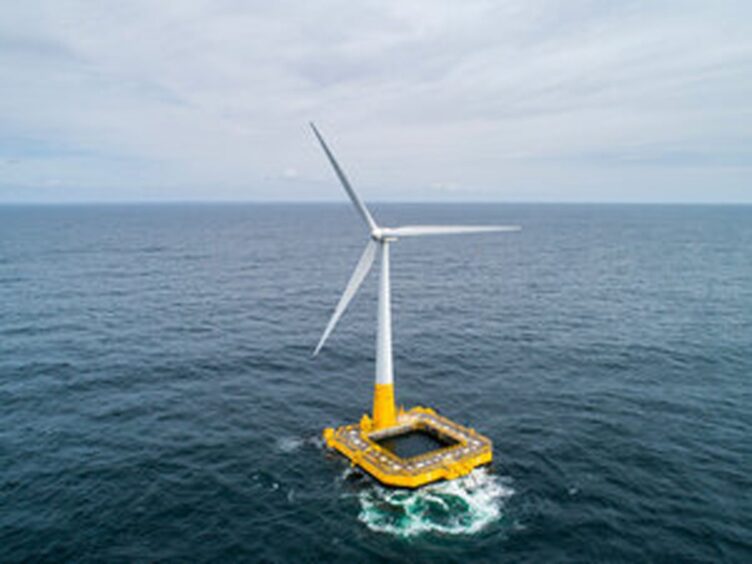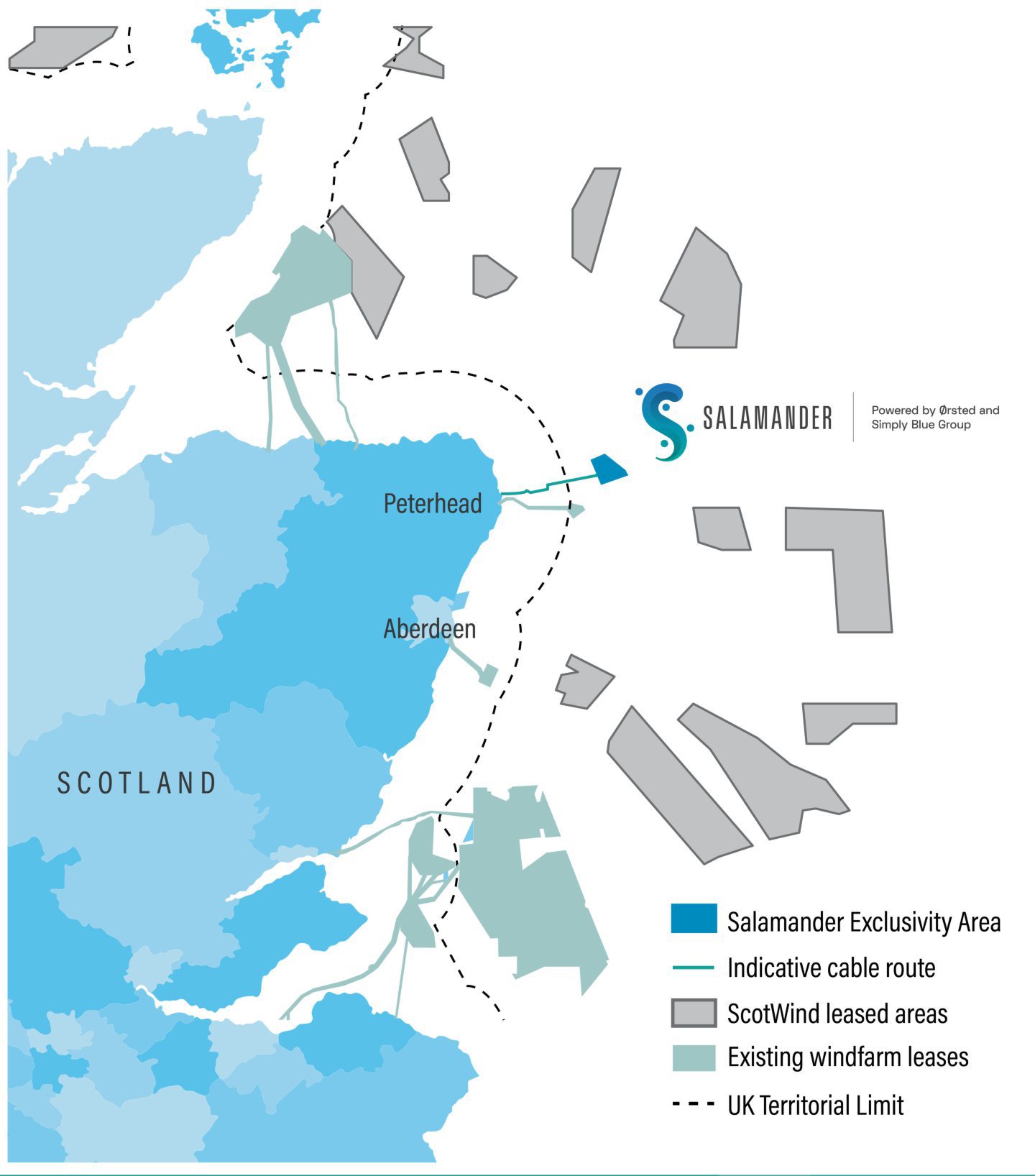
The team behind the Salamander floating offshore wind project will partner with two Scottish universities to study the impact of floating windfarms on marine ecosystems.
The 100MW Salamander project is a joint venture between Ørsted, Simply Blue
Group and Subsea7 and will be located 20 miles off the coast of Peterhead.
Working alongside experts at the University of the Highlands and Islands (UHI) Environmental Research Institute and the University of Aberdeen, the Salamander team will deploy marine sensors to monitor fish presence and behaviour at the site.
The PREDICT 2.0 initiative aims to develop a better understanding of fish migration patterns.
The ramp up of offshore renewables could see more than half of Scottish fishing grounds lost by 2050, creating a need for more information on the potential impacts on fish and their predators.
Floating offshore wind marine impact
Salamander project director Hugh Yendole said the team is proud to be collaborating on the research project.
“As a stepping stone project, part of our role is to prepare the industry to deliver for the renewable needs of the future, and this study will provide real insight into how we can do so in the most sustainable way possible,” Mr Yendole said.
“Projections place offshore wind at the centre of the Scottish energy mix in the coming years, and we are keen to ensure this is done in a way that protects our planet as well as our people.”
Associate professor of energy at UHI Dr Benjamin Williamson said marine sensing is “vital” to understand the environment around floating offshore wind farms.
“Robust information and evidence are needed to inform where offshore wind developments should be located to better protect marine ecosystems,” he said.
The second phase aims to further researchers’ understanding of fish migration patterns and monitoring techniques, building on work conducted as part of the original PREDICT programme.
The Salamander project forms part of the Scottish Government’s INTOG (Innovation and Targeted Oil & Gas) leasing round and could be “in the water” as early as 2028.
Recommended for you

 © Supplied by Big Partnership
© Supplied by Big Partnership